EMERGENCY MANAGEMENT IN THE BUILDING SITE
| NUMBER OF HOURS | 12 |
| TIMETABLE | 1° DAY – 9:00 – 15:00 2° DAY – 9:00 – 15:00 |
| VENUE | TRAINING AND SAFETY CENTER IN CONSTRUCTION – RAMALLAH |
| PARTICIPANTS | SITE MANAGER FOR SAFETY |
| CERTIFICATE AND COURSE FREQUENCY | CERTIFICATE OF ATTENDANCE MINIMUM 90% OF HOURS |
| TRAINERS | N°1 TEACHER FOR THEORETICAL HOURS + TRAINER FOR PRACTICAL ACTIVITIES |
| CLASSROOM | MAX 24 PARTICIPANTS |
| EQUIPMENT | FIRE EXTINGUISHER / KIT FIRST AID / PERSONAL PROTECTIVE EQUIPMENT |
| EXPECTED RESULTS |
| Trainees will be able to face, both from the technical point of view and with the correct behavior, the first phases of a business emergency. They will be able to intervene effectively even thanks to communication methods suitable for avoiding bad emotional reactions |
| TEACHING METHODOLOGY |
| The teaching methodology of the course foresees that in each module will be a real alternation between transmitted knowledge and experienced knowledge; at each moment of theoretical learning will follow a moment of direct involvement of the students oriented towards practical application and critical reflection |
| FIRST DAY Registration of participants and control of personal data Booking of meals (if provided) SECOND DAY Registration of participants and control of personal data Booking of meals (if provided) |
| TRAINING OBJECTIVES |
| To identify the potential sources of risk and related corrective actionsTo train people to face effectively critical situations To manage staff involved in the emergency, using suitable communication methods for better manage the operation |
| FIRST DAY: Course presentation Test about personal knowledge (optional) Theoretical Part: workplaces and potential risks – fire and/or health Identification of non-compliance through analysis of workplaces (photos or films) The importance of prevention and development of observation skills Solutions applicable to the real context to evaluate and manage effectively potential risks (fire or health emergency) in building sites The human factor during the emergency The communication as a suitable tool to avoid wrong present workers’ reactions FIRE – theoretical / practical part: intervention strategy in a hypothetical emergency situation Theoretical explanation about how to get in a room full of smoke, with partial or no visibility Test of the main personal protective equipment for fire emergency Acknowledgment of available equipment Practical activity: simulation based on a hypothetical fire emergency. Trainers have to choose the suitable fire protective equipment (displayed in the laboratory); they are divided into workgroups and simulate a fire extinguishing with the fire extinguisher Debate among workers and analysis of possible solutions |
| SECOND DAY: HEALTH EMERGENCY – theoretical / practical part: intervention strategy in a hypothetical emergency situation Notes about First Aid: trauma and injury from falling and impact; immobilization and handling of an injured person; burns: identification and first rescues to be done by the company rescuer, even using makeshift tools available in the workplace, thinking about own safety (principle of self-protection) Practical activity: simulation based on a hypothetical health emergency. Trainers are divided into workgroups, everyone has a role. In the simulated health they participate with different roles, using the learned procedures and tools. Other trainees, using a check-list, observe and evaluate the activity. After that they change roles Critical discussion among workers about procedures used during the exercise End of the training course Learning test with closed answers Test of satisfaction |


 Italiano
Italiano